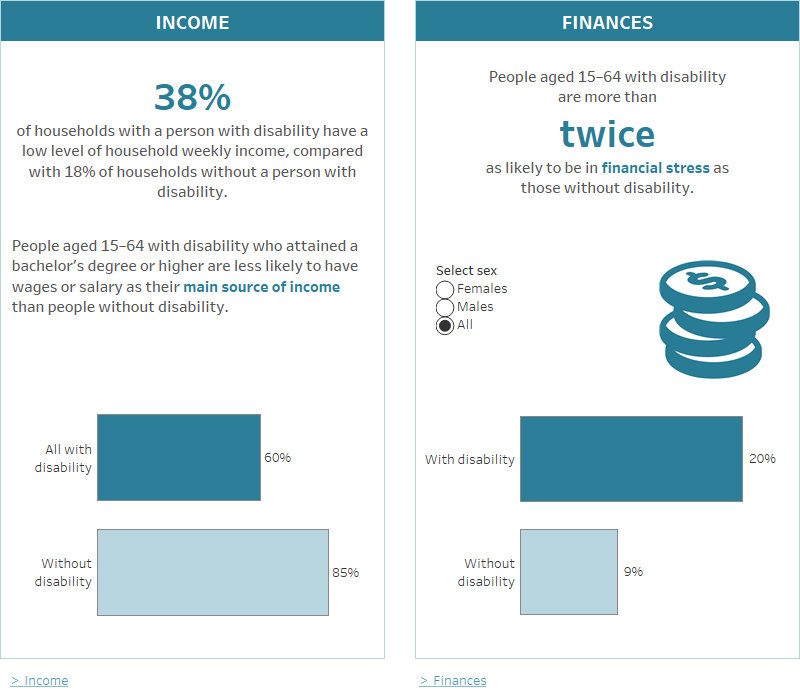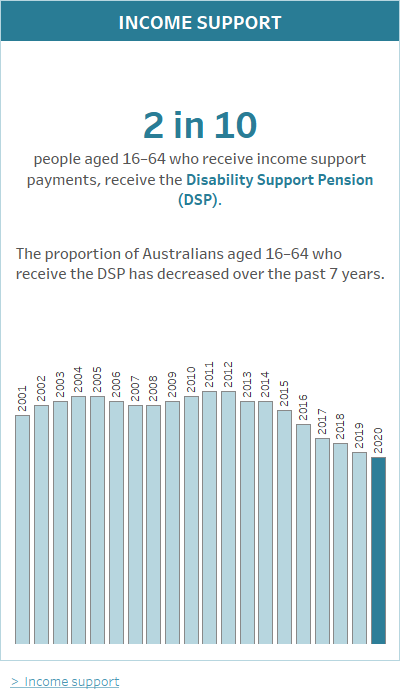Income and finance
Looking at the type and level of income people receive can provide insights into their economic security and standard of living.
What is meant by economic security?
Economic security is having a stable income or other resources to support a standard of living and cover essential needs, both now and in the immediate future. Essential needs might include food, basic shelter, clothing, hygiene, health care and education (ICRC 2015).
Economic security is important for everyone and can enhance a person’s overall wellbeing. Having economic security can enable people to participate fully in social, economic, political and cultural life.
For children, or people dependent on others for their care, indications of economic security can be seen through the income level of their family or household.
In general, most people with disability have some source of income. This is more likely to be from government sources than from salary or wages, and to be lower than for people without disability.
Summary card 1 showing key statistics for income. The card shows that 38% of households with a person with disability have a low level of household weekly income, compared with 18% of households without a person with disability. The card also shows that 60% of people aged 15-64 with disability who attained a bachelor's degree or higher have wages or salary as their main source of income, which is lower than for people without disability (85%).
Summary card 2 showing key statistics for finances. The card shows that people aged 15-64 with disability are more than twice as likely to be in financial stress as those without disability. The summary card contains a bar chart showing financial stress in people with disability and people without disability. The reader can select to display the chart by sex. Males with disability are more likely (21%) than males without disability to be in financial stress. Females with disability are more likely (19%) than females without disability (10%) to be in financial stress.

Summary card 3 showing key statistics for income support. The card shows that 2 in 10 people aged 16-64 who receive income support payments, receive the Disability Support Pension (DSP). The proportion of Australians aged 16-64 who receive the DSP has decreased over the past 7 years.

ICRC (International Committee of the Red Cross) (2015) What is economic security?, ICRC, Geneva, accessed 3 June 2020.


